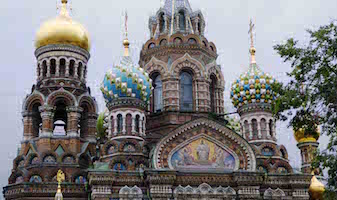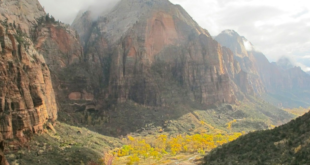 We had finally arrived in St Petersburg after 26 hours of flying. It was the first leg of a five week journey which would take us through three Baltic Countries and Scandinavia.
We had finally arrived in St Petersburg after 26 hours of flying. It was the first leg of a five week journey which would take us through three Baltic Countries and Scandinavia.
Our travelling companions were my sister Margreet and brother-in-law Neil. When Neil was diagnosed with Parkinson’s seven years ago his future looked bleak and we could not have imagined that he would be so fit and well and able to travel with us again.
A friendly welcome and comfortable beds awaited us at the Domino Prestige Hotel. It was very conveniently situated about 10 minutes’ walk from both the Hermitage and the main city street, Nevsky Prospect.
In the late afternoon we walked along the Neva river. There are only 60 sunny days here annually so we were lucky that the sun was shining and the temperature relatively mild.
We love travelling independently but as none of speak a word of Russian, and it was such unfamiliar territory we had felt it wise to book a 4 night tour with Intourist, the Russian travel agency. This has been around for years, was founded by Joseph Stalin in 1929 and staffed by NKVD and later KGB officials. Thankfully those days are gone and the business has been privatised. So we had no fears that our sixty year old guide Viktor, who was old enough to have been a guide during the latter part of the communist era would be spying on us.
While he talked to us about the positive aspects of life in Russia today, and was a loyal Putin supporter, he was also quite frank about the shortcomings in some of the public services. He liked to joke that if we weren’t having a good time with him he would have to pack for Siberia.
Day One: City Tour
On our first morning we joined a bus load of other tourists for a city tour of St Petersburg. St Petersburg was founded by Tsar Peter the Great in 1703 who had travelled to some of the other great cities of Western Europe. Inspired by their magnificence he employed French and Italian architects to build his new capital city along European lines.
Viktor was keen to share a great deal of information about all the fortresses, churches, museums, monuments and palaces as we drove past. There were so many famous landmarks that before too long we were in information overload.
At the Peter and Paul fortress we stopped to view the bleak cells in which political prisoners were incarcerated from around 1720 until early in the twentieth century. Enemies of the Romanov dynasty, and later of the Revolution were locked up there including Dostoevsky, Gorky, Bakunin and Trotsky.
Public Toilets
We had been warned by a good friend that public toilets were few and far in between in St Petersburg and apparently that used to be the case, a bit of a worry for aged bladders!
But whenever we stopped for a drink or a bite to eat in a café or restaurant a toilet was available.
Our tour guide took us to a flash souvenir shop where, apart from the clean toilets, we were also plied with a free vodka, no doubt to loosen our purse strings.
At the Peter and Paul fortress the problem had been solved by transforming a bus into a public loo. But only ladies were allowed to enter these on- board toilets.
Day Two: The Winter Palace and Hermitage
The Winter Palace, the official residence of the Russian monarchy from 1732-1917, is a hugely popular tourist attraction.
It was built and then altered by many generations of the Romanov family until in 1837 it was severely damaged by a fire and had to be rebuilt.
It is a monument to the Romanovs hugely opulent and extravagant lifestyle which was in sharp contrast to the widespread poverty in Russia. This eventually led to a rebellion starting with the bloody massacre in 1905, followed by the February Revolution of 1917, and the storming of the palace by Red Army soldiers and sailors later that year. The Romanovs got their just desserts, their reign was over.
Viktor brought the palace to life for us and told us fascinating stories about some of the large state rooms as well as intimate interiors, who created them, and how they were used.
The Hermitage is housed in part of the Winter Palace. As an art lover I had long dreamt of one day visiting one of the world’s greatest Art Galleries but didn’t think the opportunity would ever arise.It was a very special visit.
The huge art collection, with about 3 million works on display, in a magnificent palatial setting is truly mind boggling. If you spent 1 minute looking at each artwork it would take you two years to see them all.
We focussed on the highlights and gazed at paintings by Leonardo Da Vinci, Picasso, Rembrandt and other great artists. Then returned later that day to view Impressionist and Postimpressionist artworks which were displayed in a separate gallery. Just wonderful!
The Cathedral on the Spilt Blood
That afternoon we also took ourselves off to view the Cathedral on the Spilt Blood, so named because it marked the spot where Tsar Alexander II was assassinated. Unlike most of the great buildings in St Petersburg it was built in the Russian Style. The walls inside were covered in beautiful mosaics. Stalin showed no appreciation of its beauty and used it to store potatoes!
Day Three: Catherine Palace
Catherine’s Palace is 24 km South of St Petersburg. On the bus ride there, once we were out of the old part of the city, we did spot some of those bleak apartment blocks which are a hallmark of the communist era.
The Palace was built in the Baroque style and at 740 metres it is the longest royal palace in the world. It was a present from Peter the Great to his wife Catherine and was used a summer residence for the Russian tsars.
At the gate a small band of solidly built middle aged men entertained us with their own rendition of Swan Lake. Not quite Anna Pavlova!
Although it was early in the day big queues had already formed so rather than wait around Viktor took us for a guided walk in the Palace Gardens, built in the French style with a formal layout, ponds and pavilions.
Once inside the palace we made very slow progress, due to the large crowds, from one lavishly decorated room to another. In the magnificently gilded Great Hall Viktor told us the tale of how George Bush had once entertained Putin at his ranch. Putin invited him back to his home town for a dinner at Catherine’s Palace. When Bush entered the Great Hall he was so awed by its splendour that his jaw dropped.
We were amazed by the richly glowing amber room only to discover that the amber panels which cover the walls were replicas. The original panels which had been constructed in Prussia in the 18th century were looted by the Nazis in World War Two. To this day no-one has been able to discover where they are hidden.
Eating out in St Petersburg:
The breakfasts at the hotel were plentiful. In the evenings we found good and very reasonably priced food (with the help of our Lonely Planet Guide) at charming little restaurants nearby. We sampled borscht and pelmeni and Russian pancakes but other European food was also on offer and the service was friendly.
Our three days in St Peterburg were wonderful and our time there all too short. But we had other places to visit and things to see and were on our way to visit three Baltic capitals.
By Lyn Potter. Read more here.









Join the Discussion
Type out your comment here:
You must be logged in to post a comment.